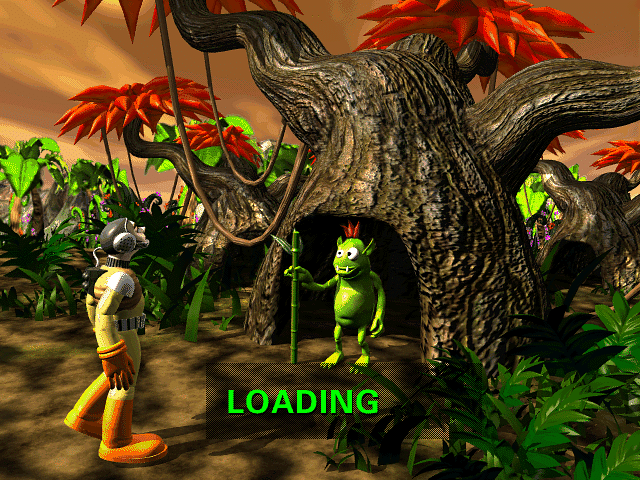April, 18, 2024 archives
Dr. Brain Thinking Games: IQ Adventure
Dr. Brain Thinking Games: IQ Adventure was one of first two games produced by Knowledge Adventure based on the earlier Dr. Brain games from Sierra Entertainment. KA and Sierra had wound up under the same corporate umbrella, and the “games group” at Knowledge Adventure that I was part of developed them. Our group handled three projects at the time: IQ Adventure, codename “Dime,” Dr. Brain Thinking Games: Puzzle Madness, codename “Nickel,” and the corporate website, codename “Penny.”
IQ Adventure is a third-person isometric puzzle/adventure game which was written in C++, and we used the networking and graphics library from Blizzard Entertainment (another corporate sibling). I was the lead programmer. We did some strangely ambitious things, one of which is that the game levels weren’t just laid out by hand, but we had a map specification language that was used to generate variations of the levels. Here is an example map that I was able to extract from the files on the CD. I couldn’t tell you how it works, really.
During our early prototyping, we did have a way of building environments by hand to test out artwork and the interface. It was just a mode in the game engine that let you “draw” with terrain tiles or place others into the environment. I remember before the team doing the artwork had created our main character, I prototyped with just a little whirling tornado that moved around so I could work on things like the path-finding algorithm.
The whole game was very data-driven. There was a text dialog system that let you interact with the NPC characters that was HTML-inspired. The animations of Dr. Brain giving you instructions were lip-synced using a tool that Knowledge Adventure had developed for their whole line of titles, which meant it was just audio files and frame timings that drove an eight-frame animation set. All of the puzzles and in-game quizzes were rule-based so they would be different on every playthrough. (Sorry to our QA team!)
Here’s a video I found someone playing through one of the levels (or more, I didn’t watch the whole thing).
The multiplayer was pretty simple but I also don’t remember much of the specifics. You could chat with other players, and because this was aimed at younger users there was a basic attempt at filtering out bad words, and I believe all of the chat was logged and someone from the customer service team was assigned to review it regularly, or maybe only when someone complained.
I wish that I still had the source code for the game and even the original media asset sources. In the released game, they were all rendered down to a 256 color palette because that was how things were at the time. I think it would be fairly straightforward to bring the game up on current platforms. You could probably even do it on WebAssembly or something else cross-platform. Unfortunately all of the filenames get lost when extracting the assets from the CD, so even just sorting them out to build something else with them would be pretty tedious. (Then again, the original game may still just work on a more current version of Windows that can run 32-bit apps, since I don’t think there was anything particularly fancy about it.)
I believe that Puzzle Madness was developed in Acomplish, the in-house proprietary multimedia scripting language that I blogged about earlier.
The third game in the series (from KA) , Dr. Brain Thinking Games: Action Reaction, was a first-person puzzle/shooter, and that was partly funded by Intel in their effort to drive adoption of the Pentium processor. It was developed using the Unreal Engine. The bad guys in that game worked for S.P.O.R.E.: Sinister People Organized Really Efficiently, which still makes me laugh. (I am pretty sure the codename for this one was “Quarter” but I didn’t work on it and left the company while it was being developed.)
